Alexandrine Parakeet: Overview, Characteristics and Care
Alexandrine Parakeets are a popular medium-sized parrot known for their impressive talking ability, acrobatic playfulness, and affectionate nature when properly trained. Distinguished by their elegant plumage in shades of green accented with grey, blue, yellow, and the signature reddish patch on their shoulder, these parrots have quite a regal air about them.
In fact, the Alexandrine Parakeet was named after Alexander the Great, as figures of nobility and royalty enjoyed keeping these birds as pets in elaborate cages during the height of their popularity hundreds of years ago. Today, Alexandrine Parakeets remain sought-after for their beauty, intelligence, and potential to develop strong bonds with their owners.
Native to the forests and woodlands of India, Sri Lanka and parts of Southeast Asia, Alexandrine Parakeets can now be found in homes and aviaries around the world. In the wild, these parrots live in flocks and communicate with a wide repertoire of noisy calls. When raised in captivity, they become attuned to the sounds of human speech and many individuals learn to clearly imitate words and phrases.
In this complete guide, we will cover everything you need to know about Alexandrine Parakeets – their origins, characteristics, proper care and housing, potential health issues, training, and breeding essentials. Whether you are considering adding one of these magnificent green parrots to your family or are just intrigued by their intelligence and beauty, you are sure to find this guide informative and useful.
Overview and Characteristics
Alexandrine Parakeets are a medium-sized parrot species that exhibit some distinct traits and qualities that make them unique among parrots. Here is a comprehensive overview of their naming, appearance, distribution, behavior, diet, and lifespan.
Names and Classification
The Alexandrine Parakeet also known as an Alexandrine Parrot. However, its scientific name reveals more about its relation to other parrot species.
- Scientific name: Psittacula eupatria
- Genus: Psittacula – includes ringnecked parakeets and other long-tailed parrots
- Species: eupatria – translates to “of a noble nature”
Alexandrines belong to the family Psittacidae along with all other parrots. There are 5 subspecies of the Alexandrine Parakeet, with some slight variations in size, plumage, and geographic range.
Appearance and Size
Alexandrine Parakeets have a distinctly regal appearance thanks to their vibrant green plumage and long tails. Some key physical features include:
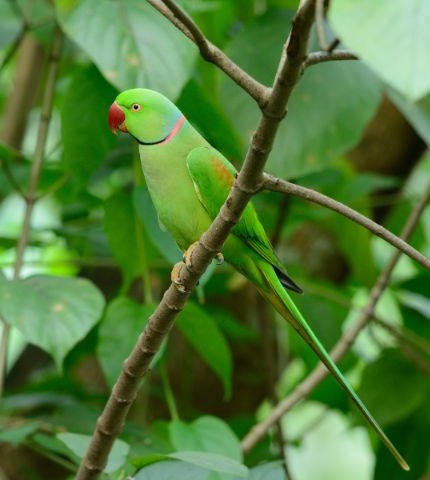
- Predominantly green feathers covering the body, wings, and tail
- Featherless yellow face patch surrounding the eyes
- Blue-grey sheen on the cheeks and nape (back of the neck)
- Bright red shoulder patch on the wing coverts
- Massive red beak with yellow tip
- Long tail for steering in flight
Males and females appear nearly identical, but adult males can be distinguished by the black on the front of the neck and pink banding on the nape of their neck.
On average, Alexandrine Parakeets measure:
- Total length: 58-66 cm (23-26 inches)
- Wingspan: 55.8 cm (22 inches)
- Weight: 250-260 g (8.75-9.1 oz)
Distribution and Habitat
In the wild, Alexandrine Parakeets are found in:
- Indian subcontinent – India, Nepal, Pakistan, Bangladesh, Sri Lanka
- Southeast Asia – Thailand, Cambodia, Laos, Vietnam, Myanmar
Their natural habitats include forests, woodlands, agricultural areas, mangroves, and wooded urban areas. Introduced feral populations have established in parts of Europe, the United Arab Emirates, and the Mediterranean.
Behavior and Temperament
Alexandrine Parakeets are highly active, social, and vocal birds. Their behavior and temperament includes:
- Intelligent and playful
- Acrobatic – excellent climbing and swinging skills
- Very loud and vocal, especially when in groups
- Can mimic human speech when hand-raised
- Form strong bonds with owners when trained through positive reinforcement
- Prone to boredom and behavioral problems without adequate stimulation
- Can be nippy and high-strung, not ideal for small children
Diet and Feeding
Like all parrots, Alexandrine Parakeets are omnivores and need a varied diet consisting of:

- Fresh fruits and veggies – apples, oranges, berries, kale
- Whole grains – rice, quinoa, pasta
- Limited seed mix – no more than 20% of diet
- Pelleted food formulated for parrots
- Some non-toxic tree branches, flowers, and leaves
Without proper nutrition, they are prone to obesity and health problems. Always provide fresh, clean water.
Lifespan
Alexandrine Parakeets, also known as Psittacula eupatria, have the potential to live a long and healthy life. With excellent care, Alexandrine Parakeets can live 25-30 years and sometimes even up to 40 years.
It’s worth noting that individual factors, such as genetics and overall health, can influence the lifespan of Alexandrine Parakeets. Some birds may have genetic predispositions to certain diseases or conditions that can impact their lifespan. Therefore, it is crucial to provide proper veterinary care, observe any signs of illness, and ensure an overall healthy and supportive lifestyle for these beautiful parakeets.
Keeping Alexandrine Parakeets as Pets
Alexandrine Parakeets can make delightful pets for experienced bird owners who are prepared to meet their specialized care requirements. Here is a detailed guide on selecting, housing, training, enrichment and potential health issues when keeping these parrots as pets.
Selecting an Alexandrine Parakeet
When choosing an Alexandrine Parakeet as a pet, consider:
- Age – Young birds under 1 year old are easier to train and bond with. Avoid birds under 8 weeks old.
- Source – Purchase from reputable breeder, not pet store. Rescue birds may have unknown history.
- Temperament – Pick a hand-raised baby that is socialized, active and comfortable with handling.
- Health – Check for bright eyes, smooth feathers, strong grip, and energetic activity. Avoid sick/skinny birds.
- Gender – No major temperament differences. Males are somewhat better talkers.
A healthy, well-socialized young Alexandrine Parakeet makes the best pet bird.
Housing
Alexandrine Parakeets require:
- Cage size – Minimum 36″ W x 24″ D x 48″ H for one bird. Bigger is better.
- Bar spacing – Bars should be no more than 5/8″ apart to prevent escape.
- Perches – A variety of natural wood perches of different sizes and textures.
- Toys – Puzzle toys, shredding toys, swings, tunnels, and more to stimulate their active minds.
- Location – Place cage in a high-traffic area so bird doesn’t get lonely.
Provide the largest cage possible and allow the bird out-of-cage time daily.
Taming and Training
Taming and training an Alexandrine Parakeet takes:
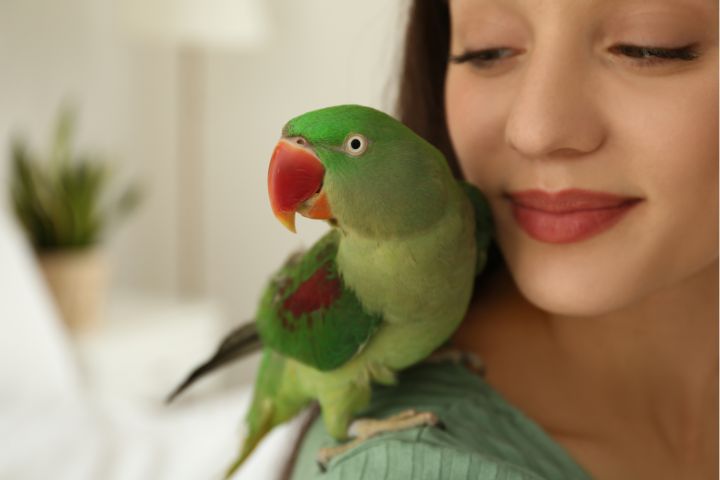
- Patience – It may take weeks or months for them to become comfortable with handling. Go slow.
- Consistency – Frequent short positive reinforcement sessions are more effective than long, sporadic ones.
- Positive Reinforcement – Use praise, treats and clicker training to reward desirable behaviors. Never punishment.
- Talking – Use repetition and reward efforts at mimicking words. Males may pick up larger vocabularies.
With time, persistence and a reward-based approach, Alexandrine Parakeets can learn tricks and household words.
Enrichment
In addition to a large stimulating cage, Alexandrine Parakeets need:
- Out-of-cage time – Allow several hours per day to fly, play, and explore while supervised.
- Social interaction – Spend quality time engaging with your parrot every day. They thrive on attention.
- Foraging opportunities – Hide treats in cardboard tubes, piñatas, and puzzle toys to encourage natural foraging instincts.
- New experiences – Change up toys, training sessions, household areas explored, and people interactions. Alleviates boredom.
Mental and physical enrichment is key to having a happy, healthy Alexandrine Parakeet pet.
Potential Health Issues
Common health problems seen in Alexandrine Parakeets include:
- Respiratory infections
- Obesity and fatty liver disease
- Feather destructive behaviors
- Parasites
- Vitamin A deficiency
- Egg binding in females
- Stress-related issues
See an avian vet for any signs of illness and yearly wellness exams. A preventative health program is recommended.
With ample socialization, training and veterinary care, Alexandrine Parakeets can make very engaging pets. They do best in homes with experienced bird owners who can devote substantial time to their care.
Breeding Alexandrine Parakeets
Alexandrine Parakeets are popular birds among avian breeders due to their striking appearance and engaging personalities. However, breeding these parrots takes dedicated preparation and diligent care of the breeding pair, eggs, and chicks.
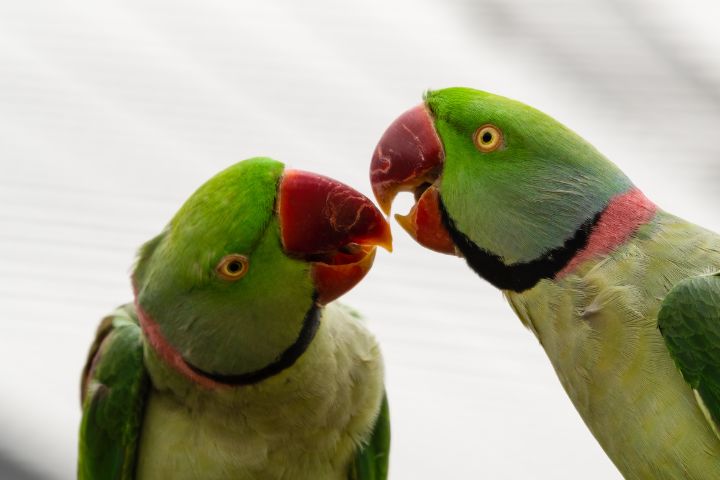
Breeding Season
In their natural range, Alexandrine Parakeets breed from November through April yearly. To stimulate breeding behavior in captivity:
- House potential mates side-by-side beginning in fall to allow pair bonding.
- Increase protein in the diet and provide nesting box when pairs appear compatible.
- Maintain longer daylight hours with artificial lighting.
- Limit handling and disturb breeding pairs minimally.
- Watch for signs of mating such as food sharing and copulation. Egg laying soon follows.
Nesting and Egg Incubation
Under natural conditions, Alexandrine Parakeets nest in tree cavities. For captive breeding, provide:
- Nesting box at least 12” x 12” x 24” lined with wood shavings/litter.
- Nesting materials such as shredded paper, palm fibers, or pine needles.
- First-time hens may need to be trained to use box.
Clutch size averages 3-4 eggs laid at 2 day intervals. Incubation period lasts 24-25 days. Parents take turns incubating and rarely leave eggs unattended.
Chicks and Weaning
Alexandrine Parakeet chicks are altricial, meaning:
- They hatch helpless, blind, with little down.
- Parents brood and feed chicks with regurgitated food.
- Eyes open at about 2 weeks. Feathers begin to emerge.
- Fledging occurs around 7 weeks of age.
- Weaning starts around 12 weeks and completes at 16-20 weeks.
Remove chicks for hand-feeding at 2-3 weeks to ensure proper socialization and weaning.
Potential Complications
Common difficulties encountered in breeding Alexandrine Parakeets include:
- Infertile eggs
- Embryo deaths
- Discarded or broken eggs
- Parents refusing to incubate or feed
- Overgrown beaks/nails of chicks
- Injury/death of chicks
Work closely with an avian vet to address any incubation or chick rearing issues promptly.
Breeding Alexandrine Parakeets can be tremendously rewarding but requires extensive experience in parrot breeding and hand-rearing techniques. Always put the wellbeing of the birds first.
Alexandrine Parakeet Subspecies
Although considered a single species, Alexandrine Parakeets have differentiated over time into distinct subspecies across their wide natural range in South Asia and Southeast Asia. There are five recognized subspecies of Alexandrine Parakeets, each with slightly different physical features and geographic distributions.
Key Alexandrine Parakeet Subspecies
Psittacula eupatria eupatria
The nominate subspecies found across the Indian Subcontinent including India, Sri Lanka, Nepal, Bangladesh and Pakistan. Characteristics include:
- Green plumage with grey cheek patches, red wing shoulders
- Medium size – total length around 58 cm (22.8 inches)
- Red beak with yellow tip
Psittacula eupatria nipalensis
Native to the Himalayan region of Nepal and Bhutan. Distinct traits include:
- Dark green plumage compared to other subspecies
- Largest of all subspecies – total length up to 62 cm (24.4 inches)
- Blue-grey cheek and neck patches in males
- Whitish-grey chest and belly
Psittacula eupatria avensis
Resides in the Andaman Islands north of India. Notable features:
- Dark green plumage like P. e. nipalensis
- Medium size of 58 cm length (22.8 inches)
- Yellowish-green rather than blue-grey on head and nape
- Thinner pink nape band in males
Psittacula eupatria magnirostris
Also found in the Andaman Islands. Characteristics:
- Slightly larger than nominate race
- Greyish chest and underparts
- Broader wingspan up to 22.5 cm (8.85 inches)
- Massive coral red beak
Psittacula eupatria siamensis
Native to mainland Southeast Asia including Thailand, Laos and Vietnam. Identifying traits:
- Green plumage with red wing patches
- Smaller size around 56 cm length (22 inches)
- Pale blue crown and neck
- Yellowish cheeks and legs
- Reddish shoulder plumage
Observing the subtle but important differences between these subspecies allows aviculturists to better understand the diversity within this parrot species. Correct identification also helps determine the origin of individual birds.
Conclusion
Alexandrine Parakeets are magnificent parrots that have captivated people for centuries with their beauty, intelligence, and Potential as talking companion birds. As we have covered in this extensive guide, proper care of Alexandrine Parakeets requires an investment of time, effort and research.
Some key points for giving your Alexandrine Parakeet the best care include:
- Selecting a healthy, energetic young bird from a reputable source.
- Housing your parrot in a very large cage enriched with toys and natural wood perches.
- Feeding a wholesome, varied diet low in seed and high in fresh foods.
- Providing ample supervised out-of-cage time for exercise and bonding daily.
- Using positive reinforcement training techniques consistently to tame and bond with your bird.
- Ensuring mental and physical enrichment through toys, training, new experiences, and social interaction.
- Having an avian vet monitor your bird’s health with annual exams and prompt care for any problems.
For those willing and able to meet their specialized needs, Alexandrine Parakeets can form deep bonds and light up your home with their playful antics and vocalizations. From their adorable fledgling stage to their exquisite adult plumage, an Alexandrine Parakeet can be a lifelong source of joy. We hope this complete guide equips you to share your home successfully with these amazing parrots! Please share any of your own Alexandrine tips and experiences below.
Frequently Asked Questions
How long do Alexandrines live for?
Alexandrines have an average lifespan of 20 to 30 years in captivity.
Are Alexandrine parrots good for beginners?
Alexandrine parrots can be suitable for beginners who have done proper research and are committed to providing the necessary care and attention.
Are Alexandrine parrots friendly?
Alexandrine parrots have the potential to be friendly and affectionate with their owners if they are socialized and handled properly from a young age.
Are Alexandrine parrots aggressive?
Alexandrine parrots can display aggressive behavior if they are not properly trained, socialized, or given enough mental and physical stimulation. Early training and socialization are important to prevent aggression.
Can Alexandrine parrots talk?
Yes, Alexandrine parrots are known for their ability to mimic and learn speech. However, not all Alexandrines develop strong talking abilities, and individual birds may vary in their talking skills.
Why do Alexandrine parrots scream?
Alexandrine parrots may scream for various reasons, including seeking attention, expressing frustration, boredom, or fear, or simply communicating with their flock members. Providing proper mental and physical stimulation, along with training and socialization, can help reduce excessive screaming behaviors.

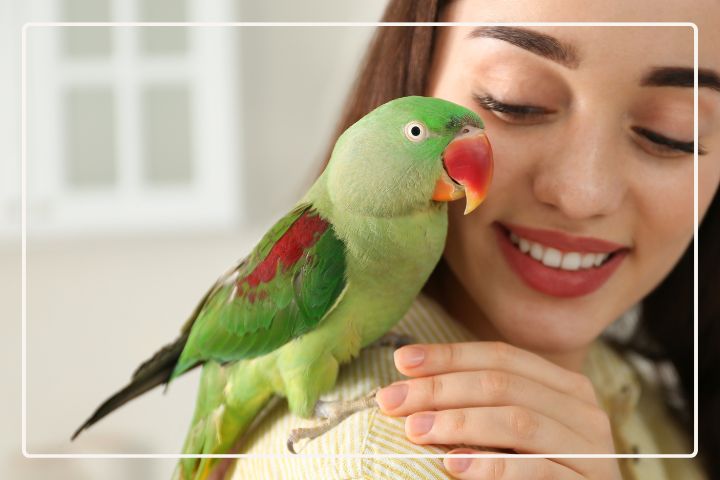
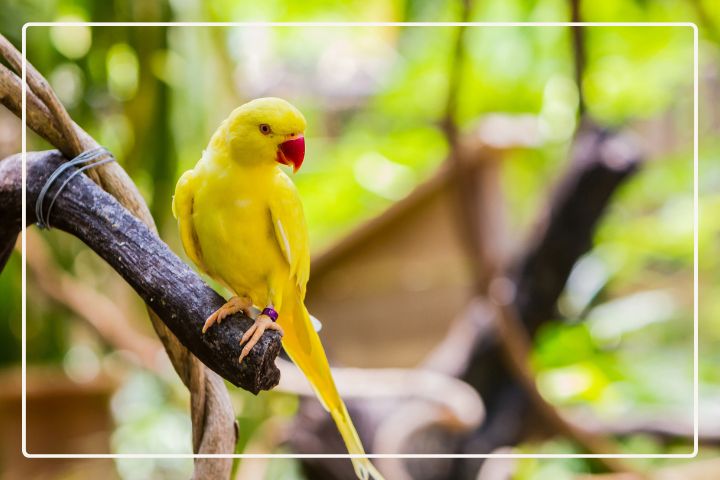
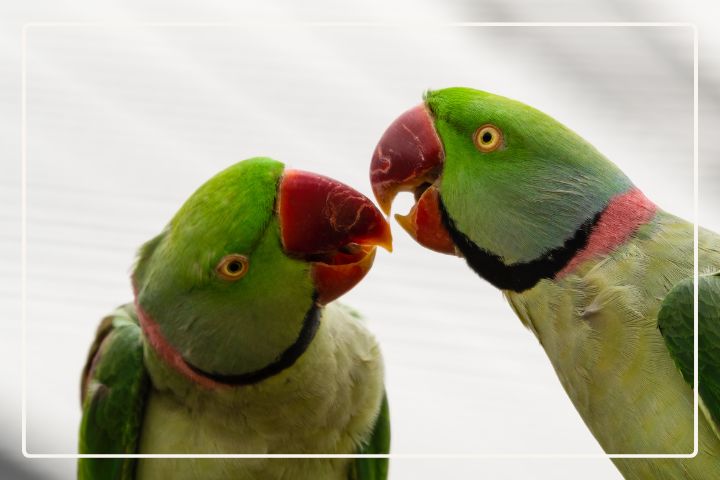


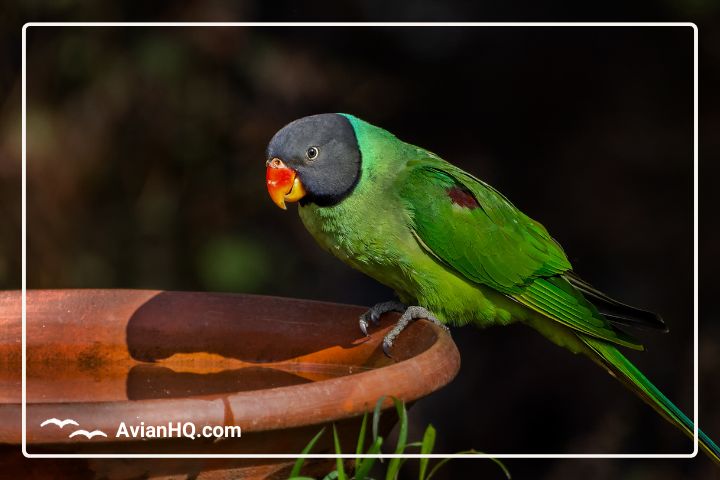
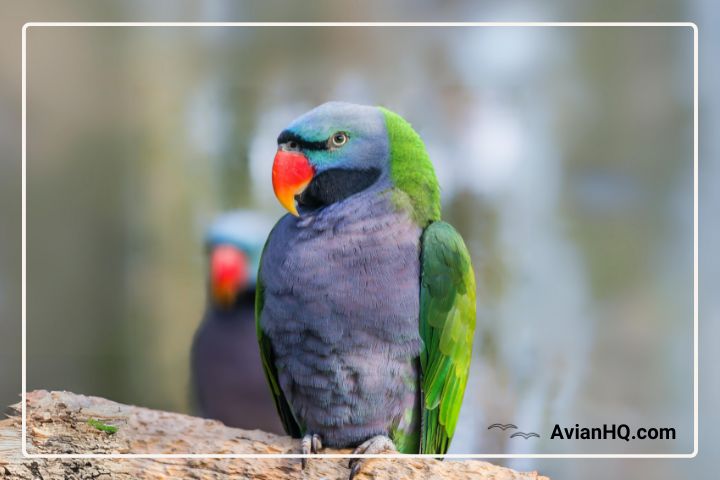
Hi would you mind sharing which blog platform you’re working with? I’m looking to start my own blog in the near future but I’m having a hard time choosing between BlogEngine/Wordpress/B2evolution and Drupal. The reason I ask is because your layout seems different then most blogs and I’m looking for something completely unique. P.S Apologies for being off-topic but I had to ask!